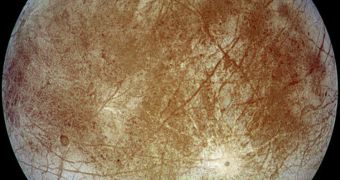Since a spacecraft meant to discover life on the Jovian moon Europa is in the works, testing to see which methods of doing this are the most efficient is essential for a successful mission. A location that provides a similar environment has been discovered at Borup Fjord Pass, in the Canadian High Arctic.
This location is a frozen fjord that features a highly-sulfurous environment, similar to what astronomers believe the icy Jovian moon has to offer. By studying how extreme bacteria survive here, experts may get an idea of what to expect when they visit the celestial body.
Discovering a place here on Earth where ice and sulfur come together was not an easy task. Chemical emissions in the Borup Fjord Pass were recently demonstrated to fulfill the necessary conditions for selection. From a satellite, the location displays a similar appearance to that of Europa's surface.
Both NASA and the European Space Agency (ESA) are currently in the process of preparing missions headed for Europa. Both will focus on finding biosignatures, subtle indicators that life either exists, or is possible, on the surface of the large moon.
“We have discovered that elemental sulfur (S) can contain morphological, mineralogical and organic 'biosignatures' linked to bacterial activity. If they are found on Europa, this would suggest the possible presence of microorganisms,” expert Damhnait Gleeson tells SINC, quoted by Astrobiology Magazine.
Gleeson was the lead author of a new study detailing the findings, which is published in the latest issue of the Astrobiology Journal. He is currently a member of the Centro de Astrobiologia (INTA-CSIC).
Needle- and rhomboid-like sulfur shapes were found to contain the mineralized remains of microorganisms and some extracellular materials, and so scientists hope that they will find something similar on Europa as well. However, this will not be an easy task.
It could be that all microorganisms on the moon, if any, are located inside the alleged underground ocean that lies beneath tens of miles of granite-strength ice. Drilling all the way to this location is impossible with current technologies.
Europa is similar to other moons in the solar system – a thick ice crust covering a supposed liquid ocean – such as Saturn's Enceladus and Jupiter's Ganymede.

 14 DAY TRIAL //
14 DAY TRIAL //